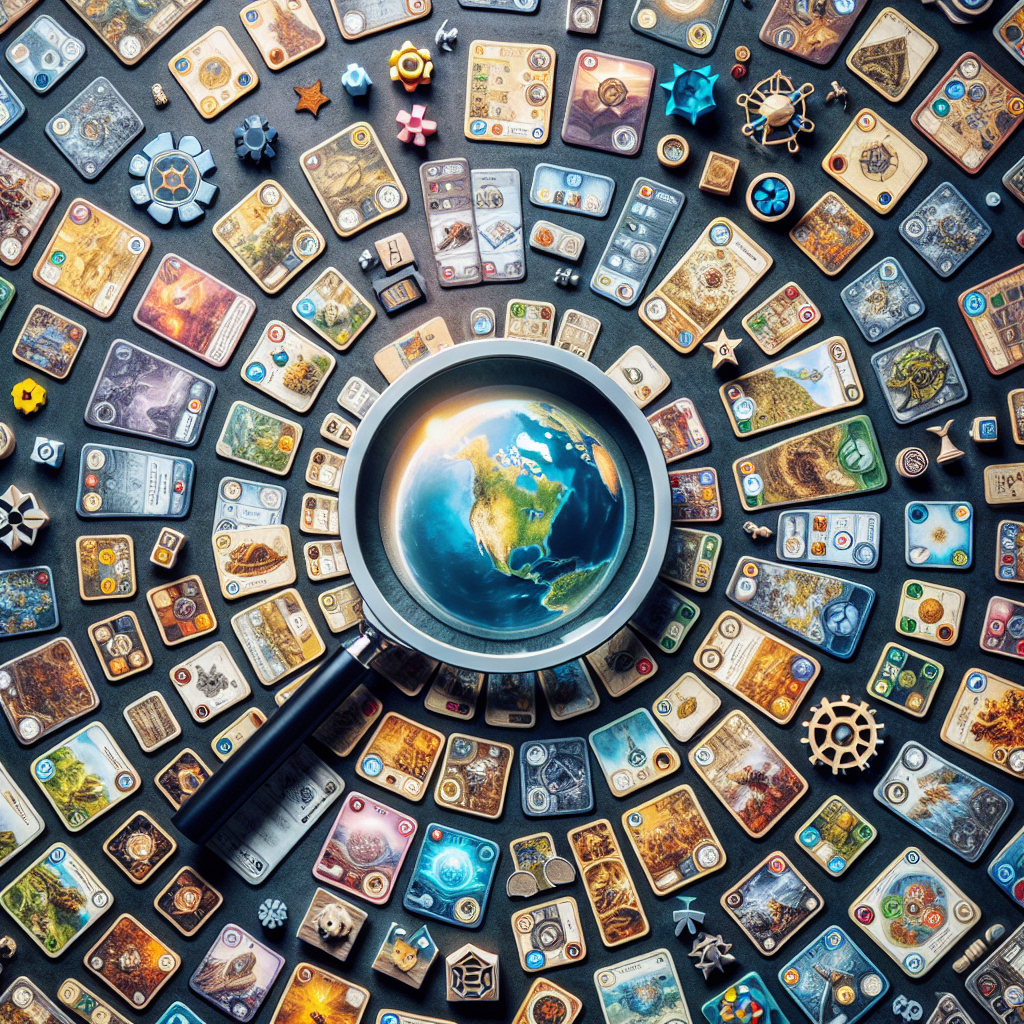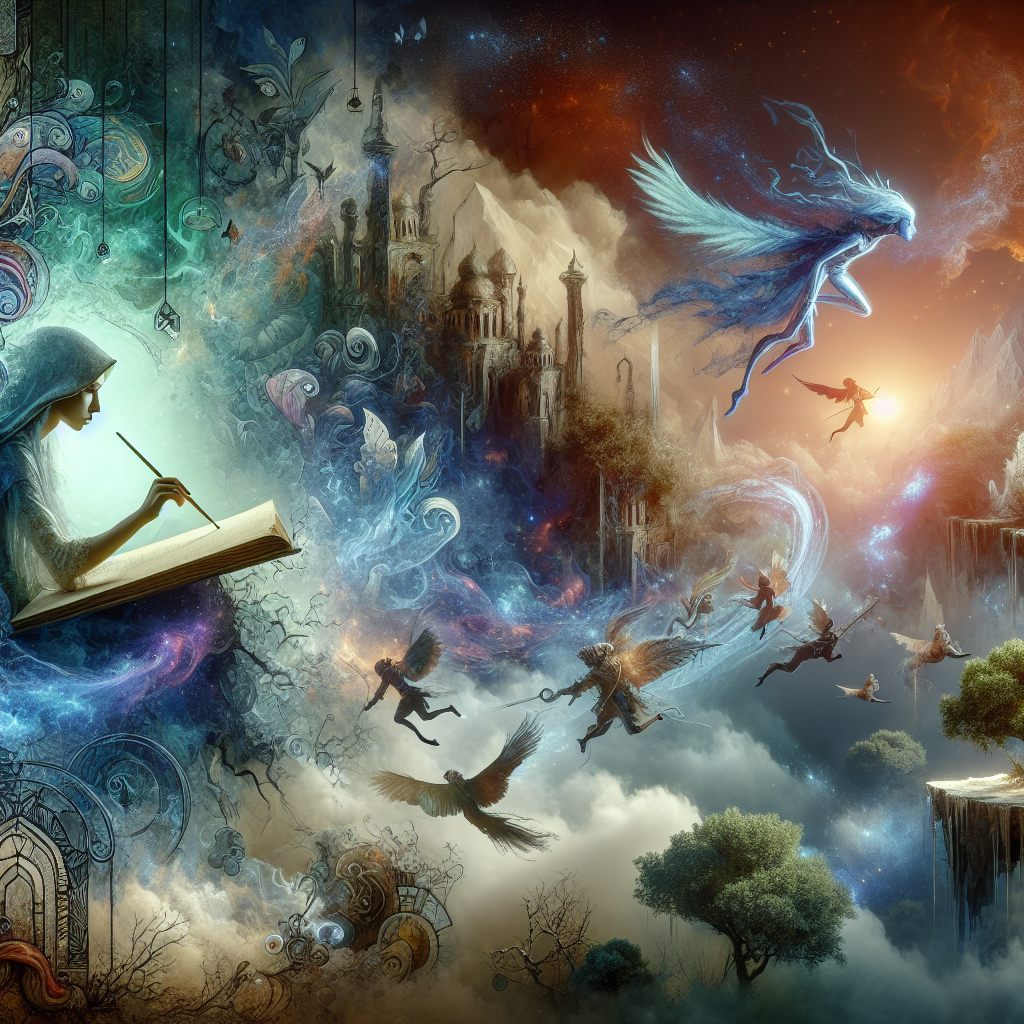
Exploring the Intricate World of Fantasy Book Character Art: A Deep Dive into the Craft
Step into a mesmerizing realm where imagination runs wild and creativity knows no bounds. Join us as we delve deep into the enchanting world of fantasy book character art, where skilled artists bring mythical beings, formidable warriors, and magical creatures to life on the page. Explore the intricate details and vibrant colors that breathe life into these fantastical characters, captivating readers and sparking their imagination. From majestic dragons to cunning sorcerers, each piece of art tells a story and invites you to immerse yourself in a world where anything is possible salt by sabrina. Embark National Park Water Bottle on a journey through the mesmerizing landscapes and unique creatures that populate the pages of fantasy books, and discover the artistry that brings these unforgettable characters to life.
The Evolution of Fantasy Book Character Art
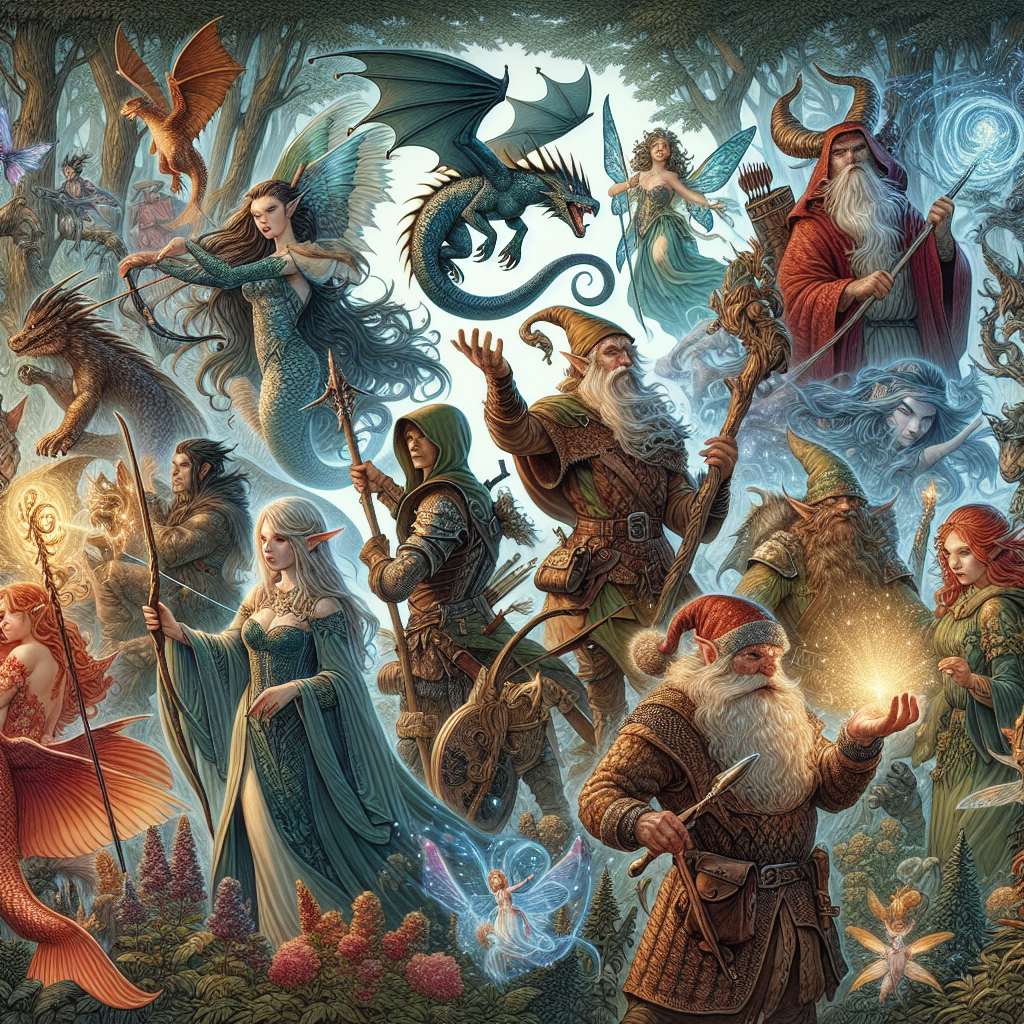
Fantasy book character art has undergone a significant evolution throughout literary history, reflecting changing artistic styles and cultural influences. Understanding the evolution of fantasy character art provides insights into the development of this intricate craft.
- Historical Overview of Fantasy Character Art in Literature
- Fantasy character art can be traced back to ancient mythologies and epic poems, where heroes and mythical beings were depicted in intricate detail.
- In medieval literature, illuminated manuscripts featured fantastical creatures and characters, often intertwined with religious symbolism.
- The Romantic era saw a surge in fantastical literature, inspiring artists to create vivid illustrations of otherworldly beings and landscapes.
- The 20th century brought about a golden age of fantasy literature, with iconic characters like Tolkien’s hobbits and dragons becoming staples of the genre.
- Influence of Different Cultures on the Depiction of Characters
- Various cultures have influenced the depiction of fantasy characters, with each bringing its own unique artistic traditions and mythologies.
- European fantasy character art often reflects medieval and Renaissance aesthetics, characterized by intricate details and rich symbolism.
- Asian fantasy character art draws inspiration from traditional folklore and legends, featuring intricate patterns and vibrant colors.
- African and Indigenous fantasy character art often incorporates tribal motifs and spiritual symbolism, highlighting a connection to nature and ancestral heritage.
- Technological Advancements and Their Impact on Character Art
- The advent of digital art tools has revolutionized the way fantasy characters are designed and rendered, allowing for greater detail and realism.
- Motion capture technology has enabled artists to create dynamic and lifelike character animations, enhancing storytelling in fantasy literature.
- Virtual reality platforms offer new possibilities for immersive character art experiences, allowing readers to interact with their favorite fantasy characters in unprecedented ways.
Early Depictions of Fantasy Characters
Examples from classic literature:
– In the early days of fantasy literature, characters were often depicted through detailed descriptions in the text rather than illustrations.
– Characters like Beowulf, with his heroic stature and fierce demeanor, were brought to life in the minds of readers through vivid language.
– The fantastical creatures in tales like “The Arabian Nights” were described in intricate detail, sparking the imagination of readers.
Art styles and techniques prevalent in early character art:
– As visual arts evolved, artists began to interpret these literary descriptions into illustrations.
– Early fantasy character art often featured exaggerated proportions and dramatic poses to convey a sense of grandeur and otherworldliness.
– Illuminated manuscripts from the medieval period depicted fantastical beings with intricate details and rich colors, showcasing the craftsmanship of the artists of that time.
Modern Interpretations of Fantasy Characters
In the realm of fantasy book character art, the modern interpretations of characters have witnessed a significant evolution in recent years. Artists are pushing the boundaries of traditional portrayals and exploring new avenues to breathe life into these fantastical beings.
Shifts in portrayal and representation of characters
- Artists are moving away from stereotypical representations of characters and delving into more complex and multi-dimensional portrayals. Characters are no longer confined to rigid archetypes but are being imbued with layers of personality and emotion.
- The emphasis is now on capturing the essence of the character, delving into their backstory, motivations, and inner conflicts. This shift has led to more nuanced and compelling depictions that resonate with readers on a deeper level.
- Diversity and inclusivity are also playing a crucial role in modern interpretations of fantasy characters. Artists are consciously incorporating a range of ethnicities, body types, and gender identities to create a more representative and inclusive world within their art.
Integration of diverse themes and elements in character art
- Modern interpretations of fantasy characters are not just about the physical appearance but also about weaving intricate narratives and themes into the art. Artists are incorporating elements of mythology, folklore, and cultural symbolism to enrich the visual storytelling.
- Themes of empowerment, resilience, and identity are being seamlessly integrated into character art, adding layers of meaning and depth to the portrayal of fantastical beings. These themes resonate with contemporary audiences and provide a powerful commentary on societal issues.
- Collaborations between artists and authors are also on the rise, leading to a more cohesive and immersive experience for readers. The synergy between character art and storytelling has opened up new possibilities for creating rich and immersive fantasy worlds that captivate and inspire audiences.
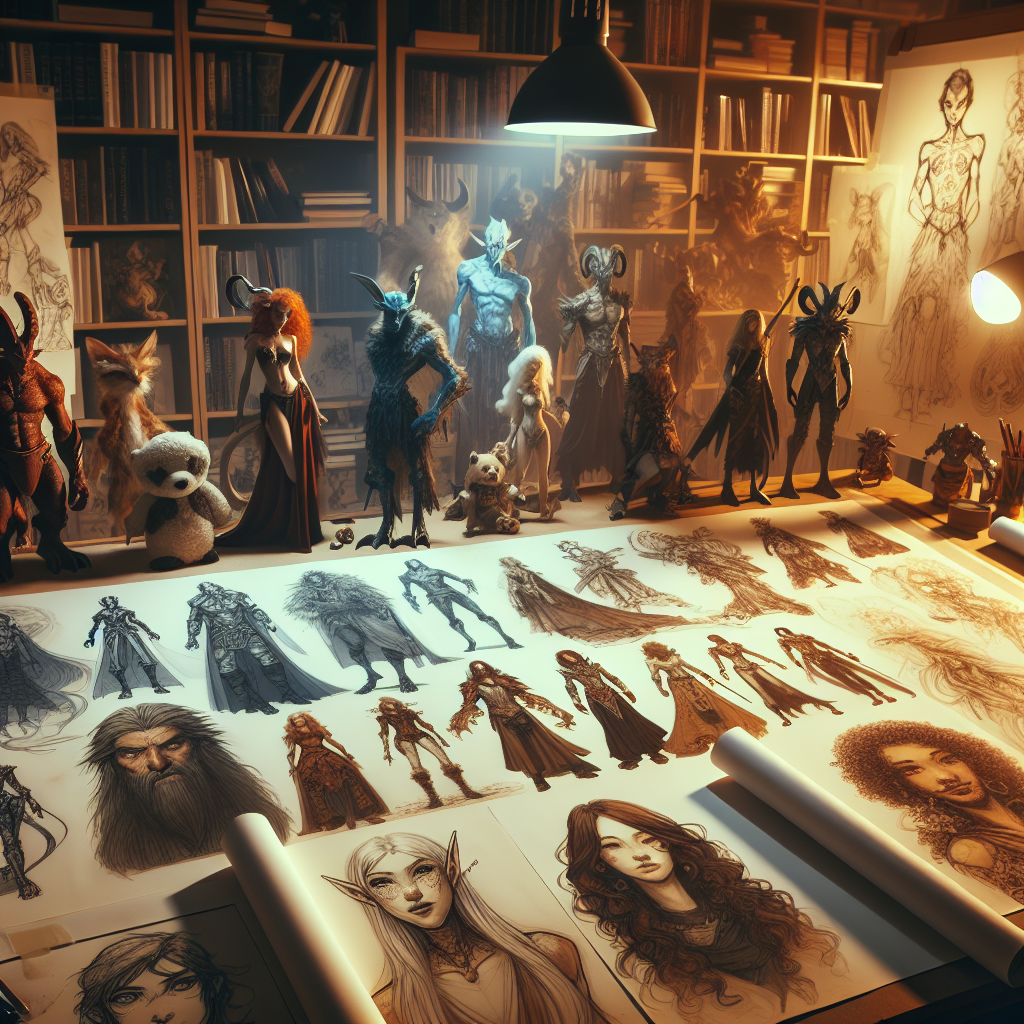
The Role of Fantasy Book Character Art in Storytelling
- Enhancing the reader’s imagination and immersion in the narrative
Fantasy book character art plays a crucial role in enhancing the reader’s experience by providing visual representations of the characters described in the narrative. These illustrations serve as a gateway for the reader to delve deeper into the fantastical world created by the author, allowing them to visualize the characters in a way that complements their own imagination. By bringing these characters to life through art, readers can form stronger connections to the story and immerse themselves more fully in the unfolding plot.
- Conveying character traits and emotions through visual cues
Character art in fantasy books serves as a powerful tool for conveying nuanced character traits and emotions. Artists intricately weave details into their illustrations that offer insights into the personalities of the characters. From subtle facial expressions to symbolic elements in the background, these visual cues provide readers with valuable information about the motivations, fears, and desires of the characters. Through art, complex emotions can be portrayed in a way that resonates with readers on a deeper level, adding layers of depth to the storytelling experience.
- Creating a visual identity for iconic fantasy characters
Fantasy book character art plays a pivotal role in creating a visual identity for iconic characters within the genre. These visual representations often become synonymous with the characters themselves, shaping how readers perceive and remember them long after they have finished the book. By capturing the essence of these characters in striking illustrations, artists contribute to the enduring legacy of beloved fantasy figures. The art becomes a cornerstone of the character’s identity, influencing how they are perceived by readers and solidifying their place in the pantheon of iconic literary creations.
Visual Cues and Symbolism in Character Art
Character art in fantasy books plays a crucial role in storytelling by visually representing the traits and characteristics of the characters. Artists use a variety of visual cues and symbolism to convey information about the characters to the readers. These elements are carefully chosen and crafted to enhance the reader’s understanding of the characters and their roles in the story.
Analysis of common visual elements used to convey traits
- Facial Expressions: The expressions on a character’s face can provide valuable insight into their emotions, thoughts, and intentions. A furrowed brow may indicate concern or determination, while a sly smile can suggest mischief or cunning.
- Body Language: The pose and stance of a character can speak volumes about their personality. A character standing tall with shoulders back might exude confidence and leadership, while a character hunched over with arms crossed could convey defensiveness or insecurity.
- Physical Attributes: Details such as scars, tattoos, or distinctive features can add depth to a character’s backstory and personality. A scar across the eye may hint at a past battle or hardship, while a unique birthmark could hold significant meaning in the character’s narrative.
The significance of colors, clothing, and accessories in character design
- Colors: The color palette chosen for a character’s design can communicate various traits and associations. For example, a character dressed in dark, muted colors may be perceived as mysterious or brooding, while vibrant colors could signify energy and optimism.
- Clothing: The style and type of clothing worn by a character can offer clues about their background, culture, or social status. A character dressed in elaborate, regal attire may be royalty or nobility, while practical, utilitarian clothing could suggest a more humble or resourceful character.
- Accessories: Accessories such as jewelry, weapons, or other items can further enhance a character’s visual narrative. A character carrying a sword may be a warrior or protector, while a character adorned with intricate jewelry could be associated with wealth or status.
In conclusion, visual cues and symbolism in character art are essential components of fantasy storytelling, allowing artists to convey nuanced details and enrich the reader’s experience of the characters and their world.
Impact of Character Art on Reader Engagement
The Role of Fantasy Book Character Art in Storytelling
Well-crafted character art within fantasy books plays a pivotal role in captivating and resonating with readers on a profound level. Through intricate and detailed character designs, artists have the power to bring the fantastical beings and worlds of the author’s imagination to life in a visually compelling manner. This visual representation not only enhances the reader’s understanding of the characters but also serves as a gateway to forming emotional connections with them.
How well-crafted character art can captivate and resonate with readers:
- Intriguing character designs can spark readers’ curiosity and draw them deeper into the narrative, fostering a sense of investment in the characters’ journeys.
- Characters depicted with meticulous attention to detail, from their costumes to their expressions, can evoke specific emotions in readers, enabling them to empathize with the characters’ struggles and triumphs.
- Unique and memorable character art can leave a lasting impression on readers, becoming iconic representations of the story and its themes long after the book has been read.
Case studies of popular fantasy characters with memorable designs:
- Harry Potter (Harry Potter series by J.K. Rowling): The character art associated with Harry Potter, including his distinctive lightning bolt scar and round glasses, has become synonymous with the beloved wizarding world created by Rowling. Fans instantly recognize and connect with Harry through these visual cues.
- Aragorn (The Lord of the Rings series by J.R.R. Tolkien): The portrayal of Aragorn as a rugged, noble ranger through character art not only complements Tolkien’s descriptions but also adds layers to his character, emphasizing his strength, valor, and inner turmoil.
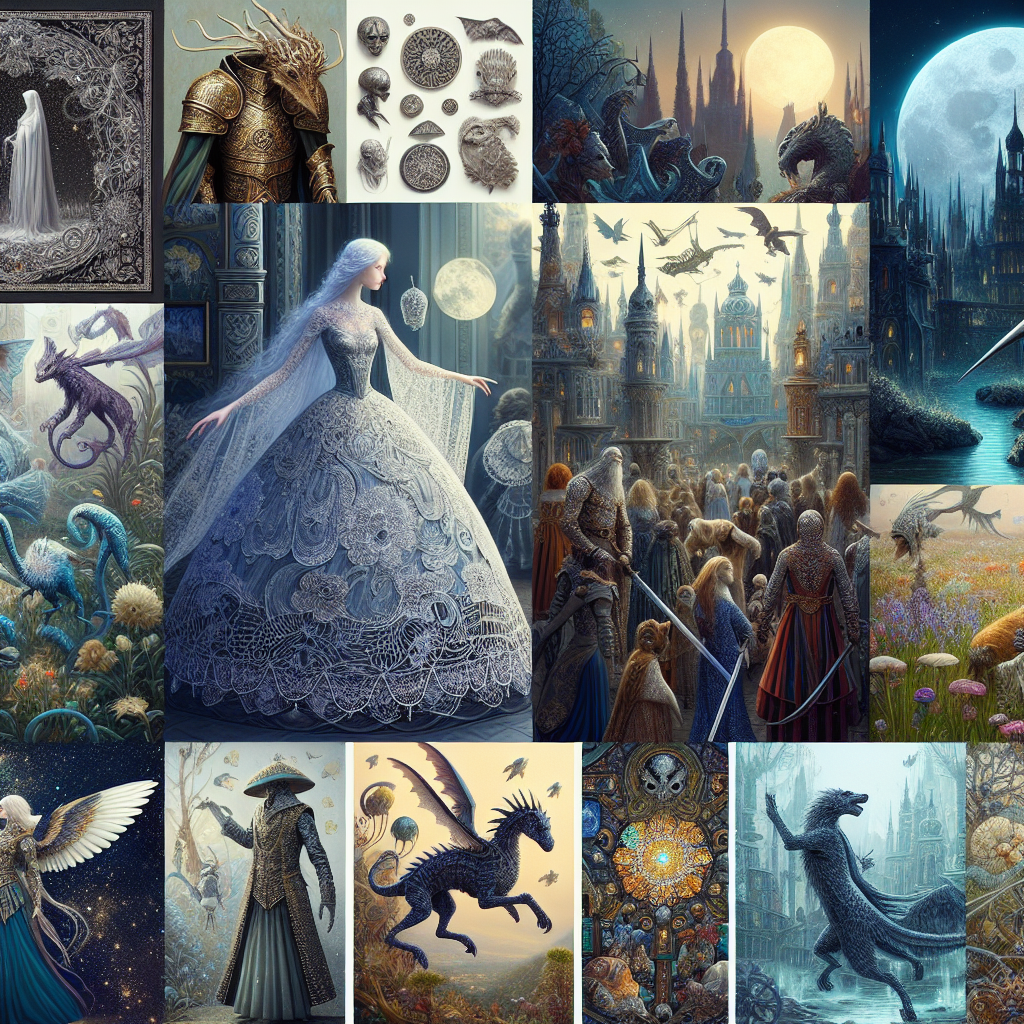
In conclusion, the impact of character art on reader engagement in the realm of fantasy literature is profound, shaping readers’ perceptions, emotions, and overall experience of the story. Through skillful artistry and attention to detail, artists elevate the narrative, allowing readers to immerse themselves fully in the enchanting worlds and characters they encounter.
The Process of Creating Fantasy Book Character Art
Collaboration between authors, illustrators, and designers plays a crucial role in the creation of captivating fantasy book character art. This intricate process often begins with the author providing detailed descriptions of the characters, including their physical attributes, personality traits, and backstory.
The illustrators then take these descriptions and bring them to life through their artistic interpretation. They must not only consider the author’s vision but also infuse their creativity and unique style into the artwork. This delicate balance between honoring the source material and adding a fresh perspective is where the magic of character art truly comes to fruition.
The iterative process of refining character art based on feedback is another essential aspect of creating compelling fantasy book characters. Authors, illustrators, and designers work closely together, exchanging ideas and suggestions to enhance the visual representation of the characters. This back-and-forth collaboration allows for adjustments to be made, ensuring that the final artwork accurately captures the essence of the characters as envisioned in the book.
Tools and Techniques in Character Art Creation
Character art creation in the realm of fantasy books requires a meticulous approach and a diverse set of tools and techniques to bring the envisioned characters to life on the page or screen. Here we delve into the essential aspects of tools and techniques used in creating captivating fantasy book character art.
Digital vs. Traditional Methods of Character Design
- Traditional methods of character design often involve hand-drawn sketches, paintings, or sculptures using mediums like pencils, paints, and clay. These methods offer a tactile and organic feel to the artwork, allowing for a unique touch and texture.
- On the other hand, digital methods utilize software and tools such as graphic tablets, styluses, and computer programs to create characters. Digital art provides flexibility, precision, and the ability to easily edit and manipulate elements, making it a popular choice among artists seeking efficiency and versatility in their work.
Software and Applications Used in Digital Character Art
- Digital character artists often rely on specialized software and applications tailored to the needs of character design. Programs like Adobe Photoshop, Clip Studio Paint, and Procreate offer a wide array of tools for drawing, painting, and rendering characters with intricate details.
- Additionally, 3D modeling software such as Blender and ZBrush enable artists to create three-dimensional characters, adding depth and realism to their designs. These tools allow for dynamic posing, lighting effects, and texture mapping, enhancing the visual impact of fantasy book characters.
Importance of Anatomy, Perspective, and Visual Storytelling in Character Design
- Mastery of anatomy is crucial in character art creation, as it ensures that characters are proportionate, believable, and expressive. Understanding human anatomy, as well as the anatomy of fantastical creatures, helps artists create characters that resonate with the audience and convey emotions effectively.
- Perspective plays a key role in character design, influencing the composition, depth, and scale of the artwork. By employing techniques such as foreshortening, artists can create dynamic and engaging poses that draw the viewer into the fantastical world depicted in the book.
- Visual storytelling is an essential aspect of character design, as it involves conveying the character’s personality, background, and narrative through visual cues. From costume design and facial expressions to setting and props, every element in the artwork contributes to telling the character’s story and captivating the reader’s imagination.
Challenges and Considerations in Character Art Development
When delving into the realm of fantasy book character art, artists encounter a myriad of challenges and considerations that require thoughtful navigation. These intricacies play a crucial role in shaping the visual representation of characters in fantastical worlds, adding layers of depth and complexity to the storytelling process. Here are some key challenges and considerations in character art development:
- Addressing cultural sensitivities and diverse representations: One of the primary challenges in character art development is the need to respect and accurately represent diverse cultural backgrounds and identities. Artists must tread carefully to avoid stereotypes or misinterpretations, striving to celebrate the richness of different cultures through their creations. Research and consultation with cultural experts are often essential in ensuring that characters are portrayed authentically and respectfully.
- Balancing realism with fantastical elements in character design: Finding the right balance between realism and fantastical elements is a delicate tightrope that character artists must walk. While realism adds a sense of believability and relatability to characters, incorporating fantastical elements is essential for capturing the magic and whimsy of fantasy worlds. Skillful artists master the art of blending these contrasting elements seamlessly, creating characters that are both captivating and grounded in their fictional settings.
- Ensuring consistency in character art across a series or franchise: Consistency is key when developing character art for a series or franchise, as deviations in design can disrupt the immersive experience for readers. Artists face the challenge of maintaining visual coherence while allowing characters to evolve organically throughout the narrative. Attention to detail, meticulous planning, and clear communication between artists and creators are crucial in ensuring that characters remain recognizable and cohesive across various installments.
Embracing Diversity and Inclusivity in Fantasy Character Art
In the realm of fantasy character art, embracing diversity and inclusivity is not just a trend but a vital aspect of the craft.
The importance of representation in character design
Representation in fantasy character art goes beyond just visual aesthetics; it is about giving a voice to individuals who have long been underrepresented in mainstream media. By creating characters from various cultural backgrounds, ethnicities, and identities, artists can connect with a broader audience and foster a sense of belonging and empowerment.
Celebrating diverse backgrounds, identities, and body types in fantasy characters
Gone are the days when fantasy characters were limited to a narrow set of standards. Today, artists are celebrating the beauty and uniqueness of diverse backgrounds, identities, and body types through their creations. From characters with disabilities to those belonging to LGBTQ+ communities, each depiction adds richness and depth to the fantastical worlds they inhabit.
Pushing boundaries and challenging stereotypes through character art
Fantasy character art has the power to challenge stereotypes and break down barriers by presenting characters that defy conventional norms. By pushing boundaries and exploring unconventional narratives, artists can inspire conversations about inclusivity and acceptance, paving the way for a more diverse and vibrant representation in the genre.
Cultural Influences and Diversity in Character Design
In the realm of fantasy character art, cultural influences play a pivotal role in shaping the intricate designs that grace the pages of books. Artists draw inspiration from a myriad of cultures, weaving a tapestry of diversity that enriches the visual landscape of fantastical worlds. Let’s delve deeper into how these influences manifest in the craft of character design:
- Mythology as a Wellspring of Creativity: Mythologies from around the world serve as fertile ground for character designers seeking to infuse their creations with cultural depth. Whether drawing from Norse, Greek, African, or Asian myths, artists imbue their characters with traits and symbols that resonate with the ethos of these diverse traditions.
- Costuming and Adornments: The attire and adornments of fantasy characters often reflect cultural motifs and historical fashion trends. By meticulously researching traditional garments and jewelry from various cultures, artists add layers of authenticity to their designs. From intricate Celtic knotwork to the vibrant textiles of South America, each detail contributes to a character’s visual narrative.
- Architectural Influences: Beyond clothing, the architectural styles of different cultures also influence character design. Whether drawing inspiration from the soaring spires of Gothic cathedrals or the intricate latticework of Moroccan palaces, artists incorporate architectural elements to evoke a sense of place and history in their creations.
- Symbolism and Iconography: Cultural symbols and iconography hold significant meaning and power, serving as visual cues that deepen the storytelling in fantasy character art. From the lotus flower symbolizing purity in Eastern cultures to the Celtic triskele representing unity of mind, body, and spirit, these symbols add layers of complexity to character design.
- Breaking Stereotypes and Challenging Norms: In a quest for inclusivity and representation, artists are increasingly challenging stereotypes and norms in fantasy character design. By creating characters that defy traditional gender roles, subvert racial expectations, and celebrate body diversity, artists pave the way for a more inclusive and dynamic portrayal of humanity in the fantastical realms they craft.
Empowering Marginalized Voices through Character Art
In the realm of fantasy character art, there exists a powerful opportunity to amplify underrepresented perspectives in literature. By consciously integrating diverse voices and experiences into character design, artists have the ability to reshape traditional narratives and foster a more inclusive and authentic portrayal of fantastical worlds.
Amplifying underrepresented perspectives in fantasy literature:
- Through intentional character creation, artists can challenge stereotypes and offer nuanced representations of individuals from marginalized communities. By infusing fantasy characters with diverse backgrounds, identities, and abilities, creators can enrich the storytelling experience and provide readers with a broader spectrum of human experiences to engage with.
- By depicting characters from a range of cultural, racial, and gender backgrounds, artists can create a more reflective and relatable fantasy landscape that resonates with a wider audience. This approach not only enhances the depth and complexity of fictional worlds but also serves to highlight the richness of diverse cultures and identities.
Collaborating with marginalized artists to bring authenticity to character design:
- Collaboration with marginalized artists is essential in ensuring that character art is not only inclusive but also authentic. By involving individuals from underrepresented communities in the creative process, artists can draw upon firsthand experiences and insights to imbue their characters with depth, nuance, and cultural specificity.
- Working closely with marginalized artists can also help to avoid tokenistic portrayals and stereotypes in character design. By centering the voices and perspectives of individuals from diverse backgrounds, creators can create characters that are more fully realized, multidimensional, and true to life.
In essence, empowering marginalized voices through character art is not only a creative endeavor but also a transformative act of representation and advocacy within the realm of fantasy literature. By embracing diversity and inclusivity in character design, artists can contribute to a more vibrant, empathetic, and socially conscious storytelling landscape that celebrates the multiplicity of human experiences.
Future Trends and Innovations in Fantasy Character Art
In the ever-evolving landscape of fantasy character art, the future holds exciting possibilities as technology continues to advance and push the boundaries of creativity. Let’s delve into the anticipated trends and innovations that are set to shape the world of fantasy character art.
Exploring the impact of virtual reality and augmented reality on character art
Virtual reality (VR) and augmented reality (AR) are poised to revolutionize the way we interact with and experience fantasy character art. By immersing users in a digital environment where characters come to life in three-dimensional space, artists have the opportunity to create truly captivating and immersive worlds. VR technology enables viewers to step into the shoes of their favorite characters, experiencing their adventures firsthand. On the other hand, AR allows for a blend of the real world with digital elements, offering a unique and interactive way to engage with fantasy character art.
Interactive storytelling and personalized character experiences
The future of fantasy character art is moving towards a more interactive and personalized experience for audiences. With advancements in technology, artists can now create dynamic characters that respond to viewer input, leading to a more engaging and immersive storytelling experience. Imagine being able to influence the decisions and actions of a character as the story unfolds, creating a truly personalized journey for each viewer. This level of interactivity not only enhances the connection between the audience and the characters but also opens up new possibilities for storytelling in the realm of fantasy art.
Pushing the boundaries of imagination through cutting-edge character art techniques
As artists continue to push the boundaries of creativity, new techniques and tools are being developed to bring fantasy characters to life in ways never seen before. From hyper-realistic rendering to innovative character design concepts, the world of fantasy character art is constantly evolving. Artists are experimenting with unconventional materials, digital sculpting methods, and advanced lighting techniques to push the limits of imagination and create truly unique and visually stunning characters. By embracing these cutting-edge techniques, artists are able to breathe life into their creations and transport viewers to fantastical worlds beyond their imagination.
FAQs for Exploring the Intricate World of Fantasy Book Character Art: A Deep Dive into the Craft
What is fantasy book character art?
Fantasy book character art refers to the visual representation of characters from fantasy literature through various artistic mediums such as illustrations, paintings, digital art, and sculptures. These depictions bring the characters to life and help readers immerse themselves in the fantastical worlds created by authors.
How important is character art in fantasy books?
Character art plays a crucial role in enhancing the readers’ imagination and understanding of the characters in fantasy books. It helps to visually communicate the unique traits, personalities, and settings of the characters, making them more relatable and memorable to the audience. Additionally, character art can help readers connect more deeply with the story and feel a stronger emotional attachment to the characters.
Who creates fantasy book character art?
Fantasy book character art is usually created by skilled artists, illustrators, and designers who specialize in visual storytelling and fantasy genres. These professionals have a deep understanding of character design, anatomy, color theory, and composition, allowing them to bring the characters and worlds from the pages of a book to life in a visually captivating way.
How can I commission fantasy book character art for my own project?
If you’re looking to commission fantasy book character art for your own project, the first step is to research and find an artist whose style aligns with your vision and budget. Reach out to the artist with details about your project, including descriptions of the characters, their personalities, and the desired style of the artwork. Collaborate with the artist throughout the process to ensure that the final artwork meets your expectations and brings your characters to life in a way that resonates with your audience.
